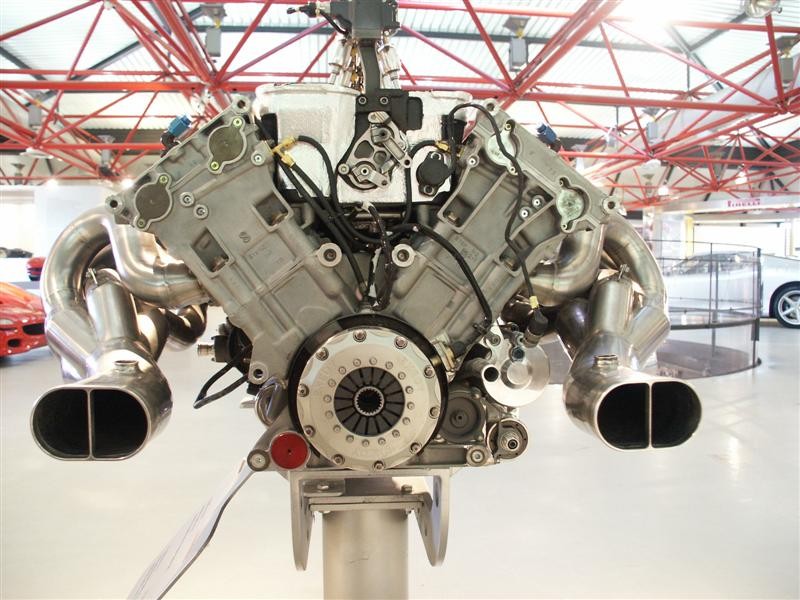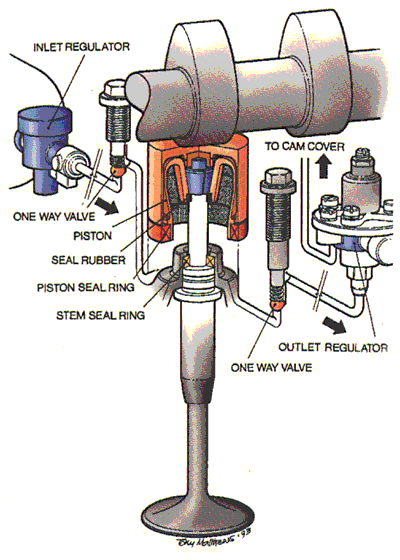Missed the POINT completely.Originally Posted by Slicks
You DO have to slip the clutch anyway.
Or you lurch off.
So it's actually NO EXTRA effort.
The point I was making was that in the teaching of driving they dont' go ontothe throttle until the person understands about clutch bite point. THEN they teach about balancing the car on throttle and clutch.
If a driver does not learn that skill and it become second nature then they cannot do effective steep hill starts, or starts towing heavy trailer or BOTH !!!
Once the skill is properly learned then there is NO difference.
To suggest otherwise is forgetting that there is more to driving a car than starting off on a flat road
I wasn't just and don't assume I was.Stop thinking in a racing POV.
Think about he statement "gears are to stay in the powerband". That alone just says nothing about acceleration (not saying racing acceleration, but just to get from a to b). Like I said, if that were the case, then only one gear would be necesary, since it says nothing about acceleration. Gears are for acceleration, AND match the powerband(really depends on the car, like trucks are going to have gears for towing, and economy cars are going to be geared for economy.)
In ANY car the wider powerband means you can stay in the same gear longer and hence do NOT need to change gear so often when at the extremities of a narrower power band you would have had to change down or up.
Have you driven a range of manuals with varying power bands ?
If you had then you will have experienced that surely ????
So gears are about MATCHING the power band to give the speed - I've said it often enough for the penny to have dropped surely
ONLY if you can't drive a manual.Yes, width of the band matters, I know. But in normal driving (stop thinking racing, cars were not made in the intension to race, think model T, made for transport) the lower the RPM the power comes at the easier it is to drive.
ANY driver who does not balance throttle and clutch on takeaway is incapable of driving with a heavy load, heavy trailer or starting on steep hills.
At some point there is not enough torque to move the vehicle.
So learning the skill it is no hassle to execute.
Drivers don't ever actually THINK the activity.
It becomes a learned response.
So not any more difficult.
If it was, then all cars would be built with a first gear and enough torque NEVER to need the throttle to drive off.
They aren't. Consider why not
Be careful, I am NOT saying that lack of torque at low end is a godd thing. Of course the balancing of throeel and clutch is an easier exercise with a torquier engine - unless you'r on snow and ice and then the OPPOSITE is true
I've proven the last comment not true with LINGENFELTERS own facts.Ah, but wouldnt taking an LS (keeping 5.7L) and making it rev to, say, 8000RPMs to produce the 600hp be "enough"? Larger dispaced engines produce more torque, and usually a better torque curve, and that is what matters.
In the balance of things lots more torque is better than a tiny increase in bandwidth.
Equally HUGE bandwidth can make up for not having much torque.
and LOTS of gears can make up for narrow bandwidth. Don't know about US trucks, but Eureopan trucks and motorway buasses can have 12+ gears.
Gears are torque multipliers.
What matters to a cars performance is the torque it delivers at the wheels.
How it makes it is irrelevant to the fact of moving the car - though does make a difference in many other areas
as you say, taking a nice torquey engine and expanding it's rev AND matching power band WOULD be enough.
That has been said all along.
Except some cars do it in different ways and not just the height, but employ the width
duh, you would normally reprogramme because you have changed something else.Reprogramming the LS1 to eliminate the rev limiter does NOT increase the powerband, becuase the LS1 was NOT made to make power at that high an RPM. If it were re-tuned than yes, but taking the rev limiter away on a stock engine is just asking for trouble.
Ah OK, I'll write to Lingenfelter and tell them they're wrong cos Slicks on UCP says you're wasting your time
Also, I dont' know about the LS1 but many older OHV engines had limiters on because they broke above certain revs, NOT because they lost power !!! BDAs, 1380s would all throw parts before they ran out of steam
Correct. but more torque does not mean better performance AT THE WHEELS THROUGH GEAR CHANGES either.So then more revs do NOT mean better powerband, a point Ive been trying to get across. BUT they CAN mean a better powerband, that doesnt mean they always will though.
You can't take a single item and make it the prima-face of engine performance. And that's why you're stuck in theis "old-thinking" mindset.
As I'd said way way back. Much more torque/power is better than a little extra bandwidth.
BUT an engine that has reasonable usable torque AND a wide powerband means the car has to do less gear changes to travel a set course be it on track in town or tootling about !!
UNLESS if has insufficient torque to get the thing rolling to start with - ie no point putting a bike engine in a 1960s muscle car. it wont go anywhere. Equally little point in putting a 1200hp tuned LS1 in a Lotus 7. ( 500bhp seems to be the max before it's the tyres adhesion is THE big limiting factor on a car so light - it needs MU values way above 1.0 to even work then )
Actually at NO POINT in that article does he say it's marketing.Good read, im sure Ive posted it before:
http://www.caranddriver.com/article....&page_number=1
In that article, Winegarden admits that DOHC is used for MARKETING, rather than a "better" engine. Yes, he says that it has its advantages, in which it does, but I made an earily point even more true now.
Could you review it please and point it out.
I may have missed it.
aha. you've got it --- so it HAS been worthwhile !!!Your right, revving higher for an OHV engine would most likely start to bend the rods. But it is true that they don't NEED to, because if you have a powerband as big as another cars powerband, whats the point?
"as big as" -- bang on. If powerbands are equal then the one with more power/torque wins.
If powerbands are NOT equal then it becomes a "depends" - how much power, how much weight to move, how many gears and a dozen others
Look back a few dozen posts, this was given to you on a plate
HAVE to remind you again that racing is NOT about being on the redline either. If race casr spent all the time on the redline they woudl expire within about 10 minutes MAX.Again, your thinking racing. Increasing revs does not always lead to a better powerband, and more certainly not a more "usable" one. Remember street driving, you are switching up at lower RPMs, your not racing at WOT near redline.
I suspect watching too much NASCAR and Demolition Derby has addled the brain
And having learned the skill to press the pedal at all, how is it harder, more complicated etc etc to use it properly ??Most of the time you have the gas peddle 1/10th of the way down from WOT, if even that much (depends on car).
So I drive with the throttle probably 1/4 way down most of the time.
Each of our feet have moved, HOW is one different than the other ? Same physical act, just a different postion




 Reply With Quote
Reply With Quote
 Usually an industry agrees on one. What is normally done is a mean is taken over the main powerband and that mean comes out to GIVE the +-10% points. Except now the mean power is in the middle. So the peak is 10% ABOVE the means and the lower limits at the left and right of the curve are the -10% limits. As engines follow a typical arc then it's usually accepted that the area above and below within the +-10% points are the same so taking the peak to be the +10% point is acceptable. PLEASE dont' ask me to go over the statistical theories for that. I can for the electronics and it will take a LOT more time than I have here given how long it's taken to get the simplified "practical" usage over
Usually an industry agrees on one. What is normally done is a mean is taken over the main powerband and that mean comes out to GIVE the +-10% points. Except now the mean power is in the middle. So the peak is 10% ABOVE the means and the lower limits at the left and right of the curve are the -10% limits. As engines follow a typical arc then it's usually accepted that the area above and below within the +-10% points are the same so taking the peak to be the +10% point is acceptable. PLEASE dont' ask me to go over the statistical theories for that. I can for the electronics and it will take a LOT more time than I have here given how long it's taken to get the simplified "practical" usage over 



 )
)




